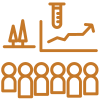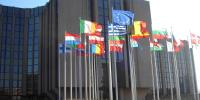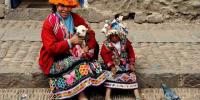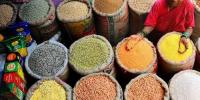Credited with saving hundreds of million from hunger in the post-World War II era, global agricultural research organizations such as the International Maize and Wheat Improvement Center (CIMMYT) will need to change their focus, funding base and partnerships in coming decades, to continue contributing to food security, prosperity and reduced environmental degradation in developing countries, said Derek Byerlee, an agricultural economist.
Byerlee made the remarks in a paper detailing the economic and political backdrop and events that led to the birth of CIMMYT, as the center celebrates its 50th anniversary. Headquartered outside Mexico City, CIMMYT has helped reduce the proportion of hungry people from about half the global population in the 1960s to below 20 percent today. Yearly economic benefits from its research and training activities, conducted on a budget of $180 million, are conservatively estimated at $4 billion. Scientists working at CIMMYT have been honored with a Nobel Peace Prize, three World Food Prizes and many other significant awards.
But global agricultural research faces uncertain funding and political challenges. In 2015 the World Bank reduced its annual contributions to CGIAR, the organization to which CIMMYT belongs, from $50 to $30 million and stated plans to end the donation in coming years. At the same time, many countries where CIMMYT works are embroiled in conflict, making research and development activities difficult and even dangerous.
“National research systems will need to take on more of what CIMMYT and other CGIAR centers do today,” said Byerlee, former World Bank economist and adviser who will give a keynote address to open CIMMYT’s 50th anniversary conference, to be held from September 27 to 29, 2016, in Mexico. “National governments are largely responsible to see this happens, but continued support from CIMMYT will be vital, particularly through training and partnerships that foster a sustained national capacity.”
According to Byerlee, Australian researcher and professor now based in the United States, CIMMYT will need to adapt its approaches to address rapid urbanization and rural out-migration in developing countries where maize and wheat are key food staples.
“Where most of the hungry are small-scale farmers, as in Africa today, the challenge is to ensure broad-based productivity growth for farmers,” he explained. “But in the future, many countries will see the bulk of the undernourished in urban areas. Productivity growth can provide affordable food, but much will depend on targeted food distribution and social safety nets.”
To read the full story, visit the CIMMYT website.
This news item is an excerpt from a press release on the release of The birth of CIMMYT: pioneering the idea and ideals of international agricultural research, and is part of a Partner Spotlight on CIMMYT (3-7 October) on the occasion of CIMMYT's 50th Anniversary.
Each week, the GFAR Secretariat is turning the spotlight on the work and collective actions of Partners in GFAR who share in our mission to strengthen and transform agri-food research and innovation systems globally. For more information on the Partners in GFAR, and to become a Partner, click here!





















